The Failed Republic Referendum of 1999
As Australians move on from the Queen’s death, the talk of becoming a republic becomes more and more widespread. However, Australian’s have already had a referendum on this issue…
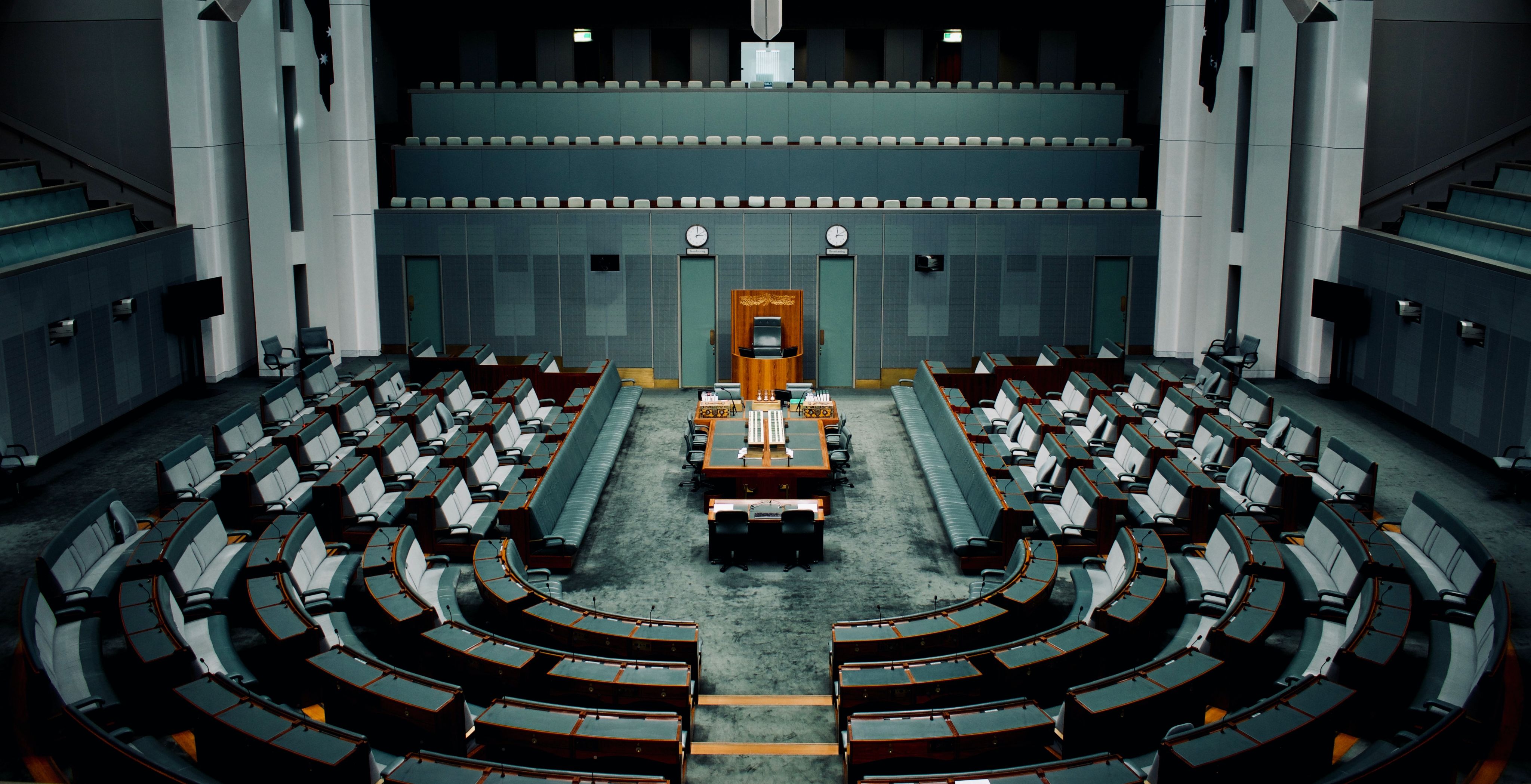
In 1999 Australians voted against becoming a republic and against changing the preamble to include First Nations people in the constitution.
1990’s opinion polls regularly recorded voters in favour of a republic by roughly 2 to 1, with about a quarter undecided.
Labor Prime Minister Paul Keating during the early 1990's delivered several widely noted speeches decrying Australia’s outmoded ties to the British monarchy and endorsing the idea of a republic.
A catalyst for the Republican Movement was a young Malcolm Turnbull. Opposing him as a monarchist was a young Tony Abbott...
The Howard coalition government won the 1996 election and convened a Republic Convention in February 1998.
John Howard spoke of the need to recognise Australia’s Indigenous people in a new preamble shortly after his re-election in October 1998.
In January 1999 both the Australian Republican Movement (ARM) headed by future Prime Minister Malcom Turnbull and the Australian Labor Party (ALP) were pressing for the preamble question not to be put to the people. Concerned that the preamble would distract attention from the republic, as well as that a preamble without bipartisan support would attract a race based scare campaign which might derail both the republic and the preamble questions. [Source]
I think that as we approach the Centenary of Federation there are a growing number of Australians-Liberal and Labor, republican and anti-republican alike-who would like to see embedded in the basic document of this country some recognition of the prior occupation of the landmass of Australia by the Indigenous people. That is my view. As I go round Australia, I find a greater unanimity of support for that than I do on the issue of a republic.
Howard suggested that the preamble should be “republic neutral”.
In February 1999, Howard received the support of the joint party room to draw up two separate constitutional amendment questions: one being the matter of Australia become a republic and the other on the insertion of a new preamble.
The referendum questions would look like this:
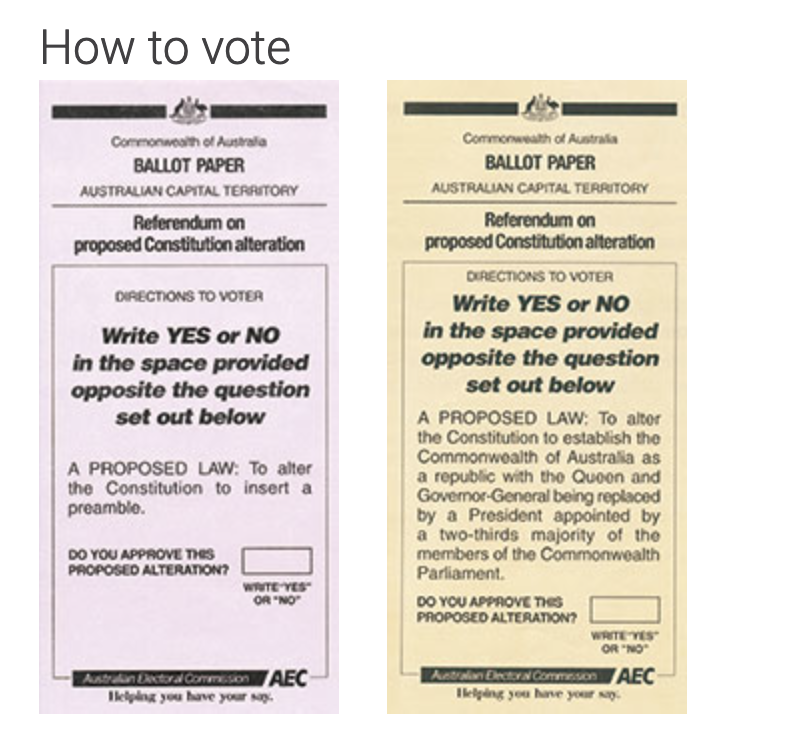
And the preamble would have been worded like this:
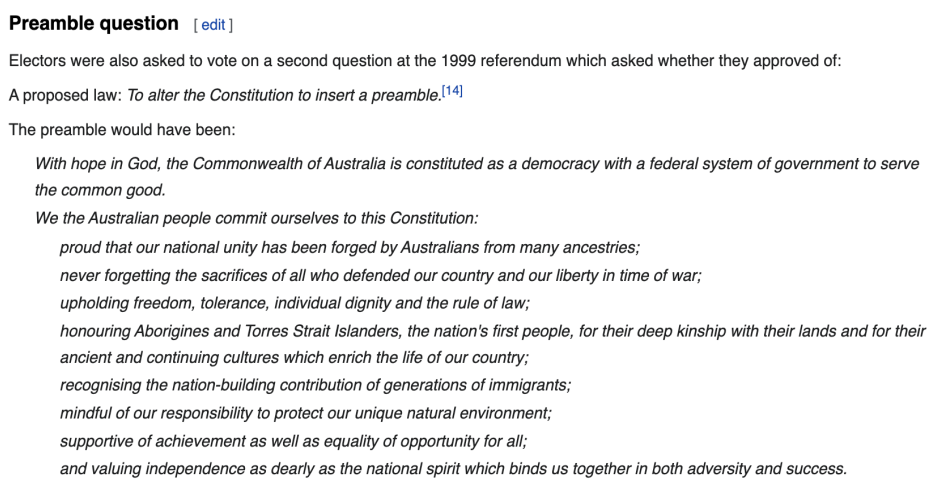
Georgia Gonos (44) was 21 at the time of the 1999 Referendum.
“I definitely voted in favour of becoming a republic and for the proposed preamble, but I think the thing I remember most about it was that nobody kind of cared about. I don’t remember it being a big deal, as if everyone knew it might not work.”
Georgia said that as a young person at the time, she may not have been as informed about the issue but would of voted in favour of the questions more for thinking that the monarchy was an extremely outdated institution and in her words "archaic".
“The Queen was this alouf figure,” she says.
“When I went to Europe in 1998 - I didn’t even go to Buckingham Palace, I just hated the royals and probably consciously made sure I didn’t engage with anything to do with the monarchy- whilst I was over there”

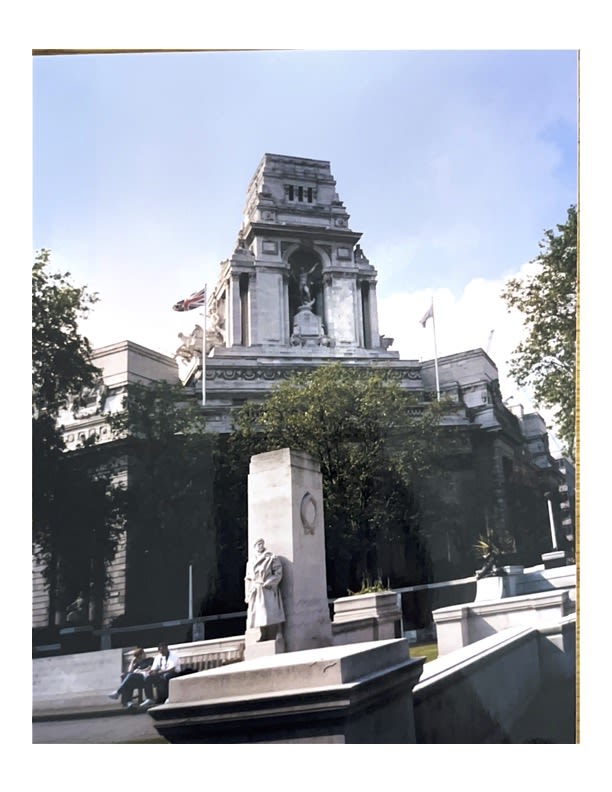
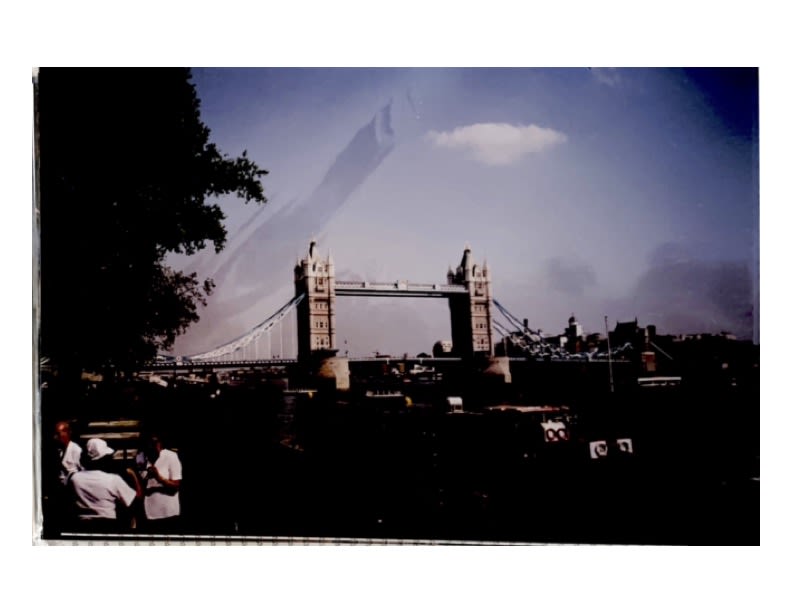
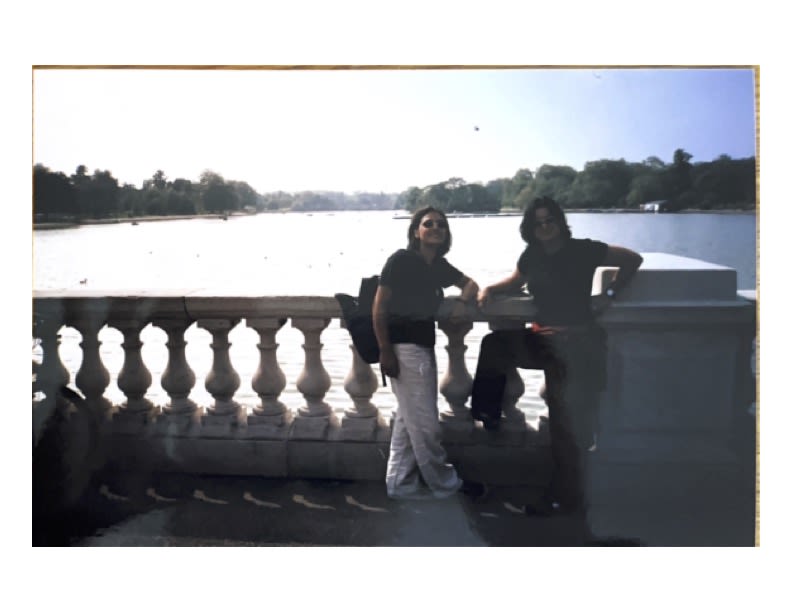
The Prime Minister John Howard at the time of the referendum publicly stated:
“I am personally against [becoming a republic], but I recognise that the Australian people want this vote, before the turn of the century”.
Nevertheless it became evident from the counting completed on the referendum night alone, that the two proposed constitutional changes would fail to gain the required double majority.
Only the Australian Capitol Territory recorded a majority ‘yes’ vote for the republic question.
The preamble question did not gain a majority ‘yes’ vote in any state or territory.
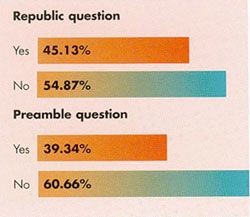
Source: AEC
Source: AEC
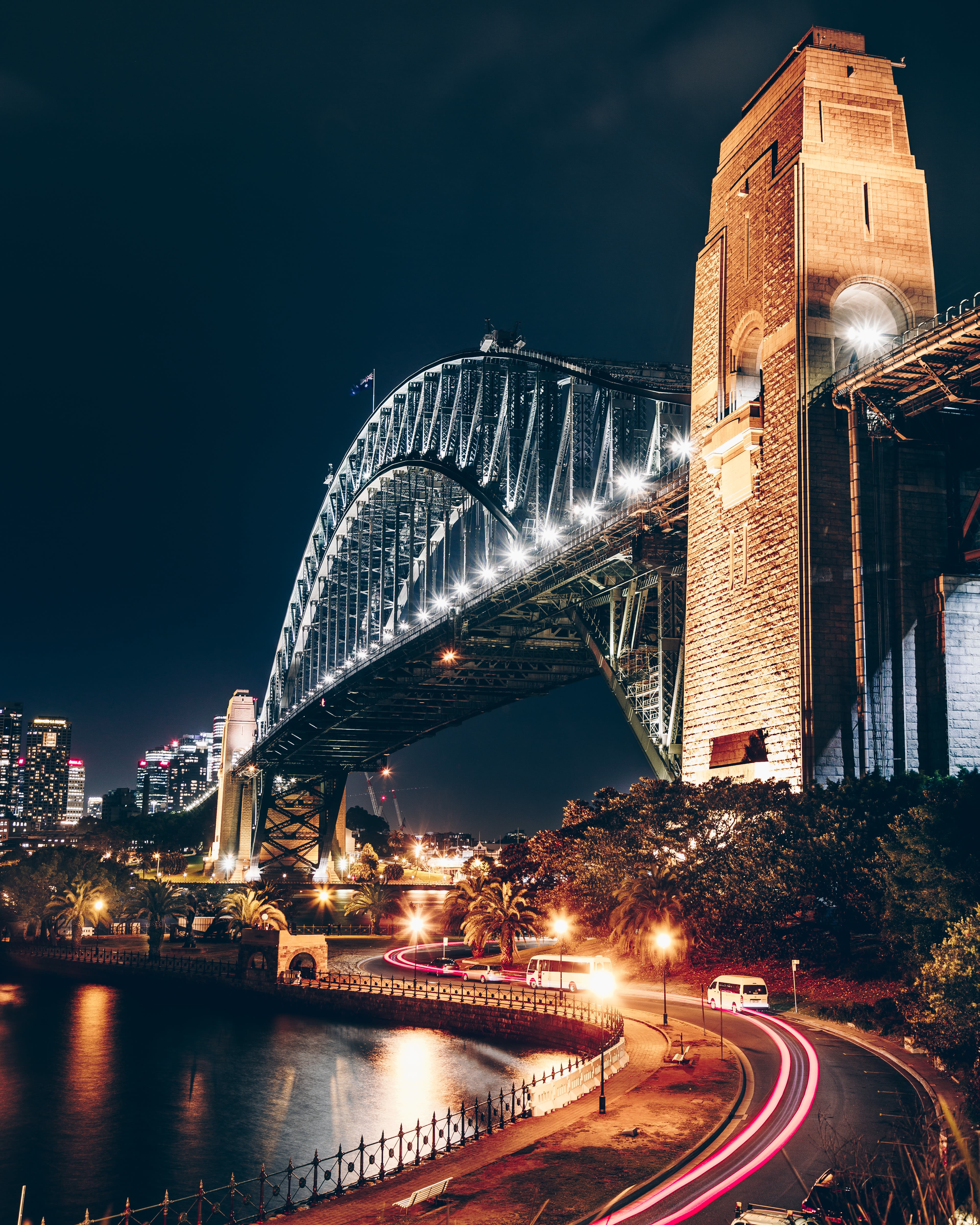
Photo by Christopher Burns on Unsplash
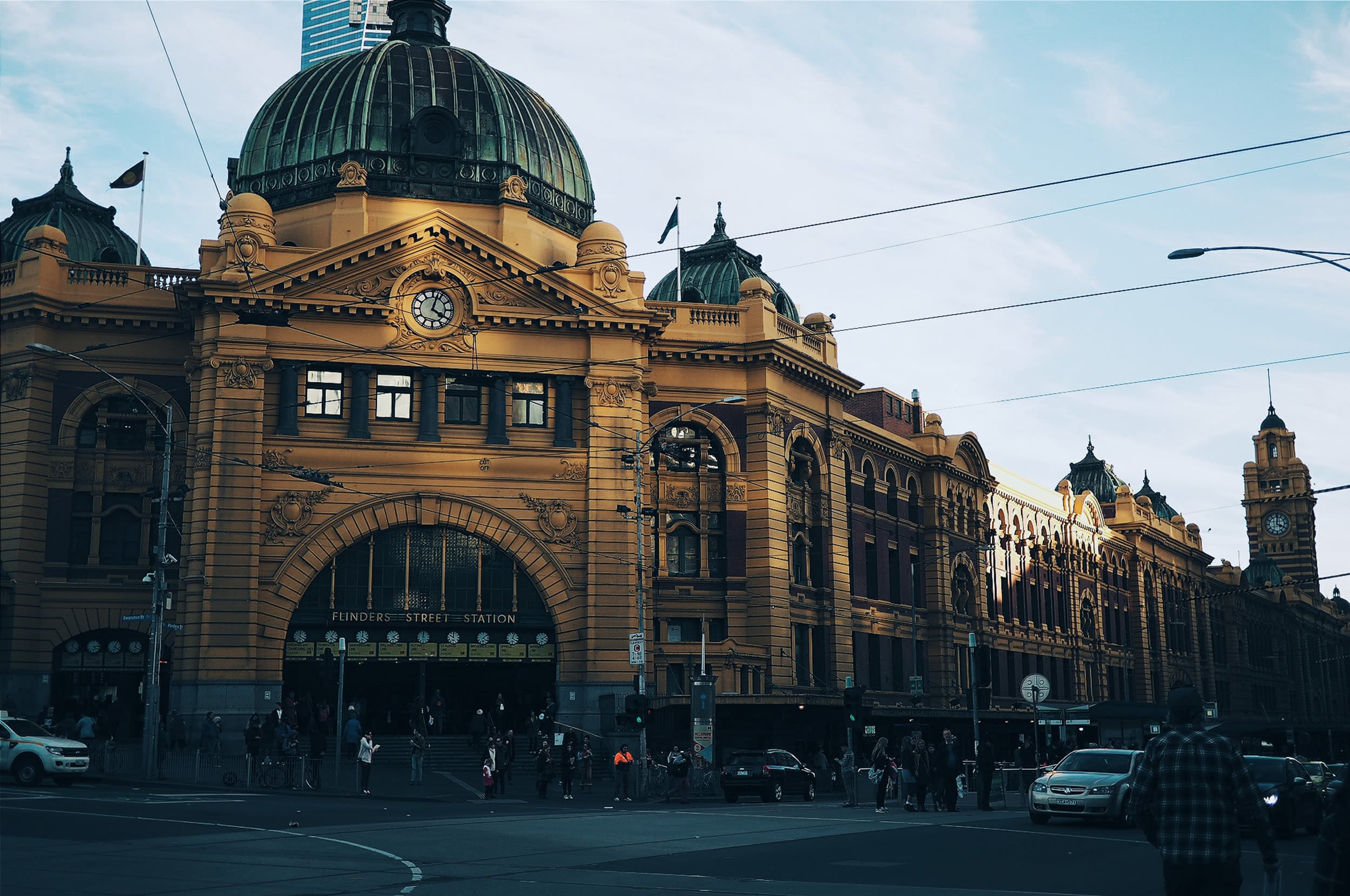
Photo by Fabian Mardi on Unsplash
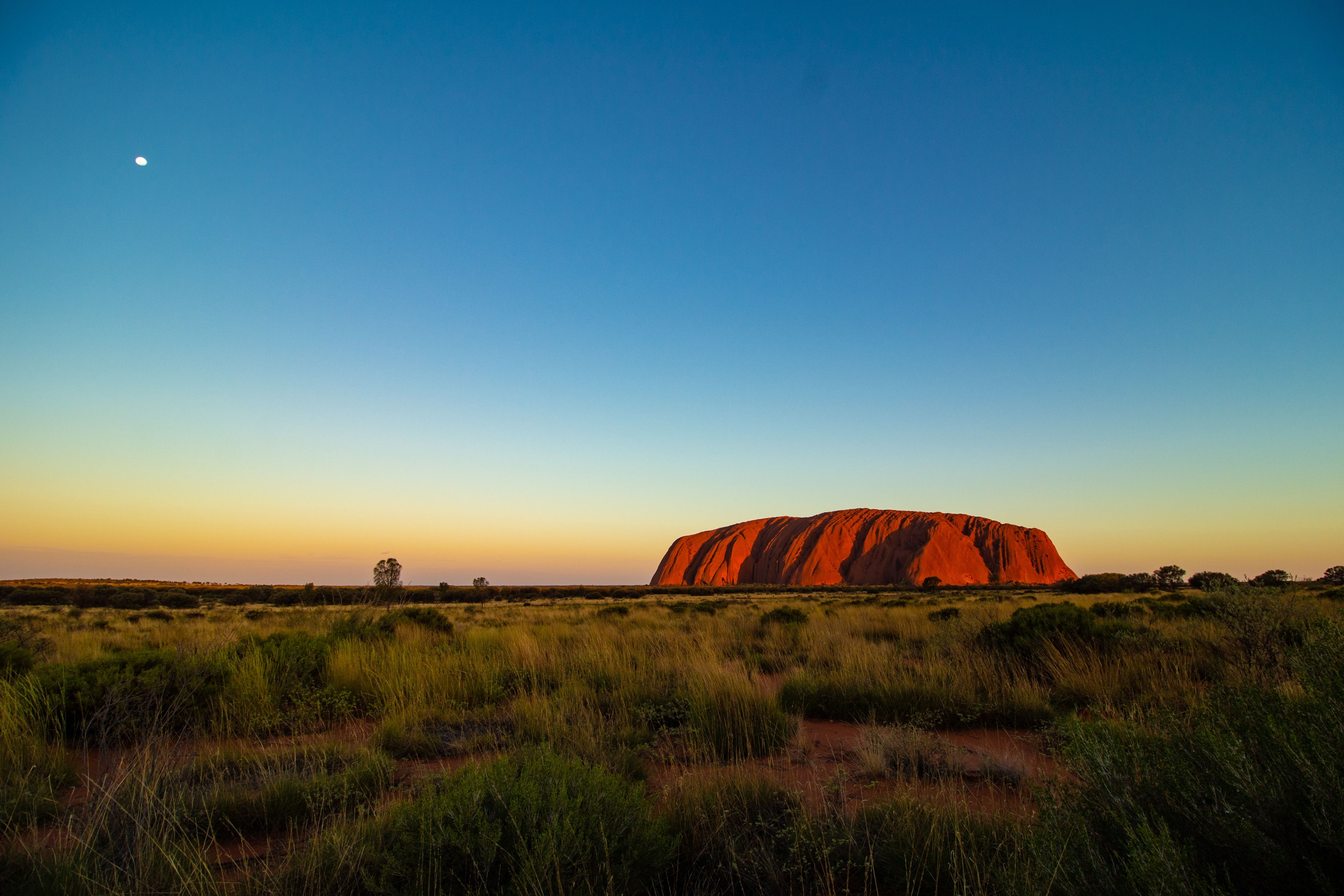
Photo by Ondrej Machart on Unsplash
Both campaigns aimed at basic voter sentiments.
The YES campaign reassured voters that most of Australia's brightest leaders and celebrities favoured the change and that remaining in the monarchy would risk embarrassments such as an Australia ruled by 'King Charles III and Queen Camilla'.
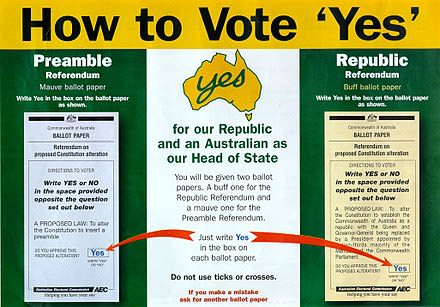
Source: AEC
Source: AEC
The NO campaign claimed that the referendum would create a "politicians republic" and said that real democrats should favour a directly elected president and should therefore vote NO. [Source]
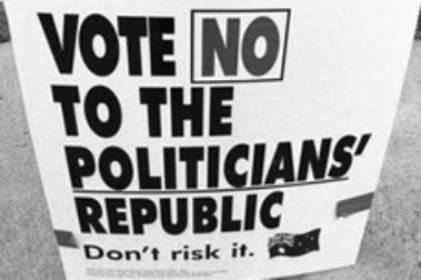
Source: norepublic.com.au
Source: norepublic.com.au
The most apparent reason for the winning NO vote on the referendum day was the specific proposal that the president of the proposed republic be appointed by parliament and not directly elected by the people. [Source]
Georgia Gonos, who was 21 at the time of the referendum remembers people saying that they wanted Australia to become a republic but they were voting no- due to the wording and proposed structure of parliament.
“There was probably confusion around the double question and how a president would be appointed. I don’t think I was informed enough to care. For me at the time it was a no brainer- of course we should be a republic you know,” she highlighted.
A multitude of factors contributed to the constitutional changes not going through. It seemed to have been quite a rushed process, without full bipartisan support for both questions as well as the inflexible republican model meant that Australians voted against breaking ties with the British monarchy.
So what does this mean for us in 2022?
The current Albanese Labor Government is planning to hold a referendum in 2023 to enshrine a First Nations voice into the constitution. With this already in motion and having major support from both sides of parliament and the wider public, will Australia actually need to become a republic and break ties with the British monarchy now that the Queen has died?
Is becoming a republic just a natural progression in the modernisation of Australia as a nation, truly breaking away from our colonial history would be an important step in reconciliation of First Nations people.
Treaty talks in Victoria already in motion are also another important part of reconciliation among Government and First Nations people. Should a treaty be considered before a republic movement?

